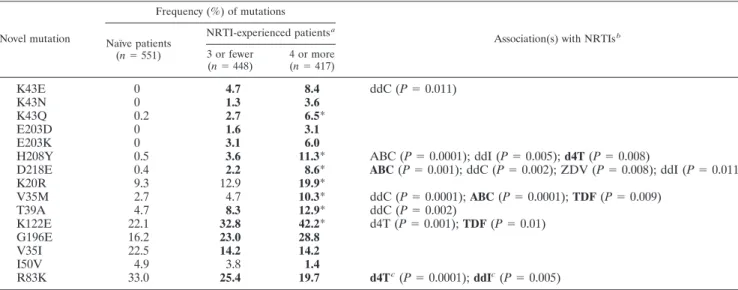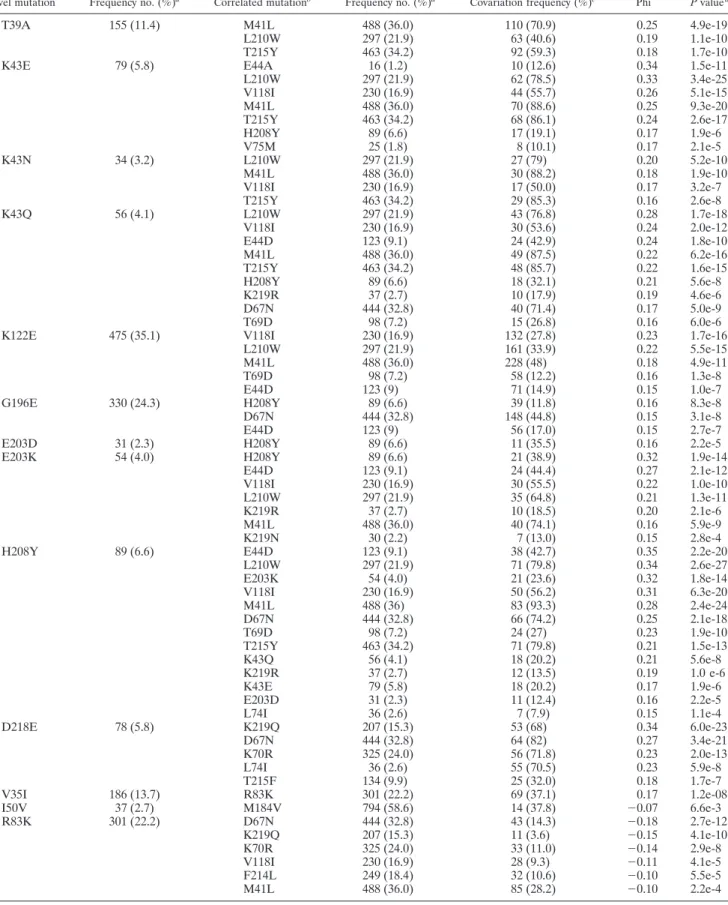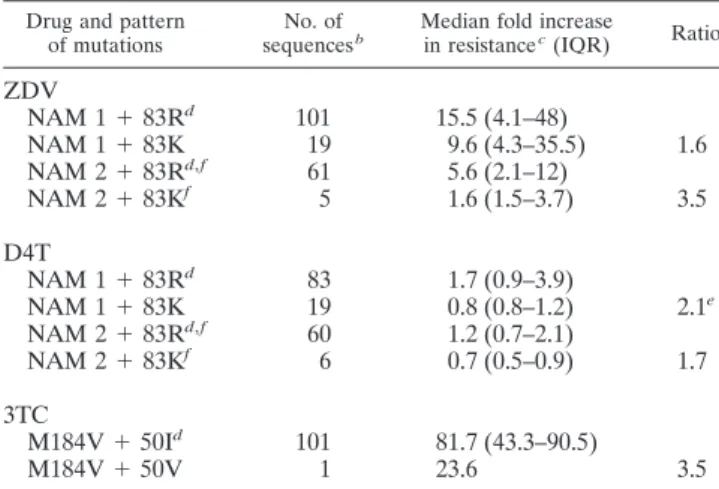Involvement of novel human immunodeficiency virus type 1 reverse transcriptase mutations in the regulation of resistance to nucleoside inhibitors
Texto completo
Figure




Documento similar
In the preparation of this report, the Venice Commission has relied on the comments of its rapporteurs; its recently adopted Report on Respect for Democracy, Human Rights and the Rule
Although Asian American critics have historically shunned any literary model that examines an Asian past, calling instead for a sustained critique of American
Here we report that infection of human cells with HIV-1 conveys the proteolytic cleavage of GCN2 and that purified HIV-1 and HIV-2 proteases produce direct proteolysis of GCN2 in
When comparing the distribution of our mutations with the mutations from the PHEX mutation database [18], a lower mutation density was observed in the first and second part of the
On the other hand, we addressed the role of GRK2 in the heart of adult (9 month) mice or of mice fed with high-fat diet, two conditions known to promote insulin resistance. In
The objectives of this study were to describe the demographic and clinical features, antiretroviral therapy (ART) history, antiviral drug resistance and susceptibility to drugs in
Prevalence, viral replication efficiency and antiviral drug susceptibility of rtQ215 polymerase mutations within the hepatitis B virus genome... Mechanistic
In the “big picture” perspective of the recent years that we have described in Brazil, Spain, Portugal and Puerto Rico there are some similarities and important differences,